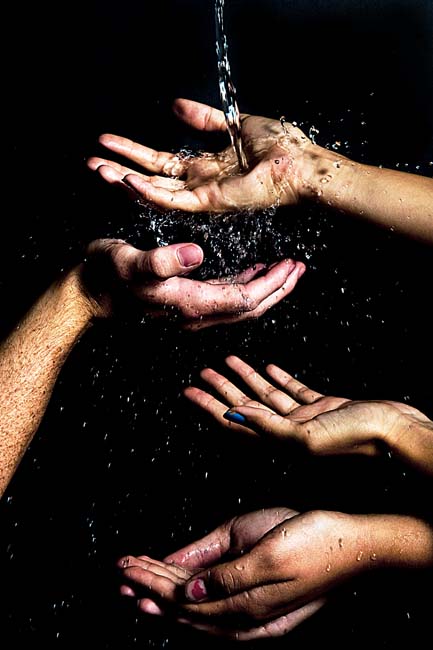L.A. thirsts for relief

By Tessa McClellan
Sept. 28, 2009 9:28 p.m.
Southern California water scarcity quickly becomes more of a harsh reality as increases in dust, brown patches in the lawn and failing trees around campus allude to UCLA’s desert-like location.
These changes reflect the visible impact of the drought and water restrictions on the campus landscape, said Richard Ohara, UCLA senior grounds superintendent.
“We try to keep the university an urban forest, and it’s been really difficult to do that,” Ohara said. “We are trying to save water at all costs.”
As a member of the Los Angeles community, UCLA has adapted its watering schedules to accommodate the Phase III restrictions imposed by the Los Angeles Department of Water and Power, which went into effect in June.
The restrictions limit the use of sprinklers for water to Mondays and Thursdays before 9 a.m. and after 4 p.m., said Walter Zeisl, a spokesman for the DWP.
The city allows hand-watering with a hose with a shut-off valve during those hours throughout the week.
The DWP reported in its June 1 press release that it implemented these restrictions to alleviate the combined burdens of the natural drought and limitations on the importation of water from the Delta.
Though Zeisl said the city may adapt the specifics of these regulations in the future, he believes the Los Angeles community must continue to follow the basic rule of cutting back on water usage to combat the scarcity of the resource.
“Prohibitions have been in place for a number of years,” Zeisel added. “We’re looking at the long-term low water situation.”
Though Ohara said UCLA landscapers generally rely on the irrigation system for 90 percent of the campus’s watering needs, he added that gardeners might need to water by hand during the acceptable hours to save some of the campus’s trees.
“I’m losing a lot of plant material that needs the water,” Ohara said. “We do less trimming now because we have less water and less growth.”
Zeisl also said that water conservation team members throughout the L.A. community are trying to educate customers about the need for water conservation and enforce the recent restrictions.
Though individuals caught watering outside the permitted hours only receive a warning after the first time, second-time violators of the water-use regulations face fines ranging from $100 to $500 or $600.
Despite their negative consequences for plant life on campus, these regulations have resulted in some success. According to the Aug. 26 press release provided by the DWP, Angelenos reduced water usage in July by more than 17 percent from the previous year.
Nurit Katz, UCLA sustainability coordinator, said she believes the increase in brown patches on lawns throughout the community and in creative gardening techniques are signs that Angelenos are taking the new restrictions and the water shortage seriously.
“It’s just part of what we have to do in this kind of drought,” Katz said. “My hope is we will go beyond the regulations and reduce our water use even more.”
The UCLA Sustainability Committee, formed in 2005, and the water task force, created this year, aim to improve water conservation on campus by taking into account campus-wide needs and the suggestions of officials from divisions across the university, she said.
Katz added that UCLA’s current efforts to reduce domestic consumption of water include replacing current urinals with low-flow urinals and recovering and reusing water from air conditioning systems, vacuums and other lab equipment and the storm drain system underneath the Ronald Reagan UCLA Medical Center. Potential artificial turf projects may also decrease water usage.
Through such efforts, the university has conserved over 71 million gallons of water per year since 2000, Katz said.
Ryan Mullen, a third-year global studies student who performed research on water conservation in the dorms, said that student conscientiousness and interest in saving water pleasantly surprised him.
He said that students who began timing their showers cut down the length of their showers by approximately 30 percent.
Katz said she believes that the positive reception of efforts to reduce water usage reflects the importance of issues of waste, water and sustainability to members of the UCLA community.
But she added that the many improvements remain necessary and that officials need to combat the challenge of communicating with students and staff to let them know about opportunities to get involved.
“They really care, but they don’t always know what they can do or what UCLA is doing,” Katz said. “When people have tools and resources, they are generally motivated to contribute.”


